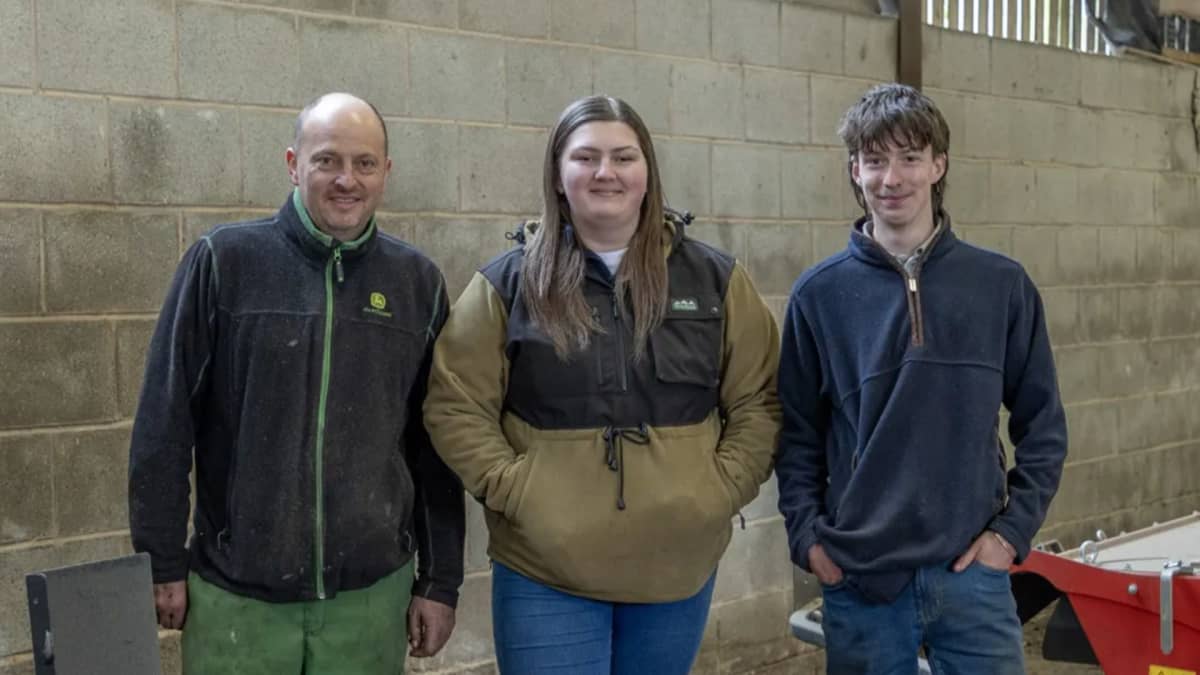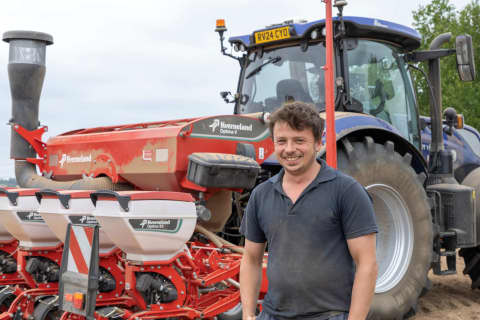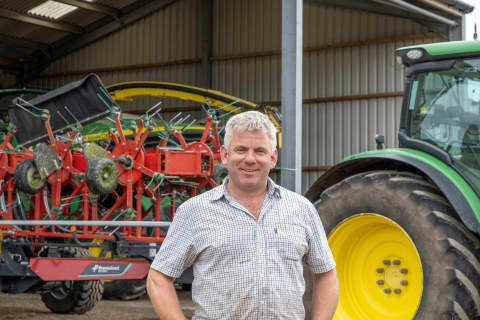“Adding an extra 3m to our working width has been a game changer for us,” explains Scott Hall, pictured with daughter Martha and Dom Ravenscroft, at K Hall & Son’s 1,000-acre Farm in Yorkshire, England. With a focus on producing around 1,000 round bales of high-quality silage and hay for their beef and sheep, the Halls have prioritized efficiency.
Scott says the outfit is easily handled by the farm’s frontline John Deere 6250R, and with auto-steering guidance, the Kverneland mowers make sure its 8.75m working width is cut every time, often with daughter Martha at the controls. “Grass is dropped quicker, so it has more chance to dry,” says Scott. “The steel tine conditioners get wilting off to a good start, though we always ted everything, sometimes twice. It means the Kverneland disc mowers don’t need to leave rows that match the width of our rake.”

With a mix of field sizes and very few that are flat, Martha emphasizes that having a tractor stable enough to handle the equipment is as important as having enough power. “Using 250hp on just 6m was not very efficient,” says Martha. “Now, when I go mowing, I can make better use of the tractor’s power, and despite a slower forward speed, output has increased considerably, and balance is much better when making headland turns.”
As soon as the grass is down, the focus shifts to tedding. “Weather windows have gotten shorter and more unpredictable, so we don’t need to spend days mowing, risking the grass getting spoiled,” she says. “This great combination of Kverneland mower conditioners also leaves clean stubbles, and the beds match up perfectly.”
“There is plenty of flexibility too – you can use any combination of the three beds when cutting the last bits of a field, and you don’t necessarily need big fields to make the most of the triple Kverneland mowers. It’s a very nimble set-up.”




